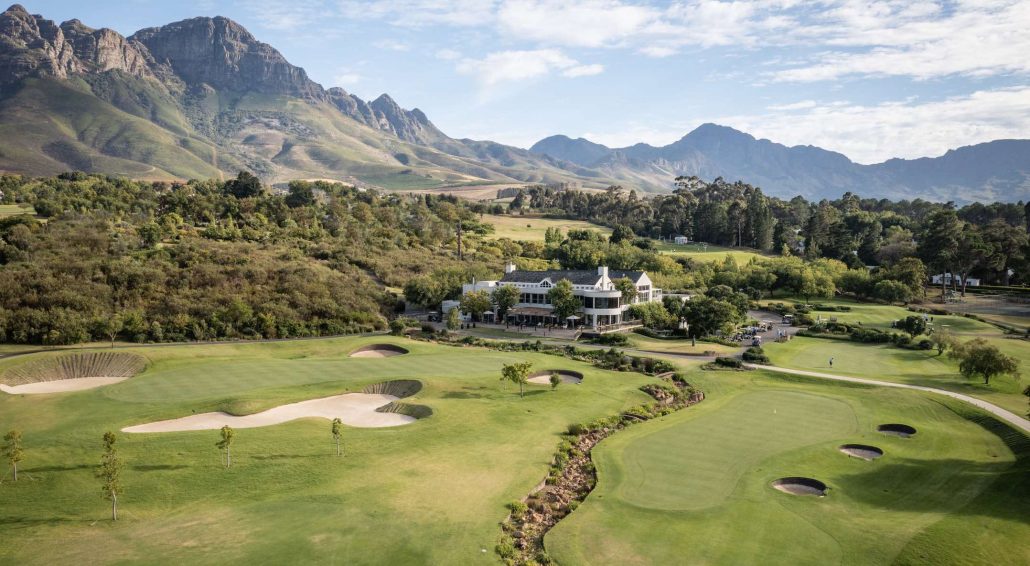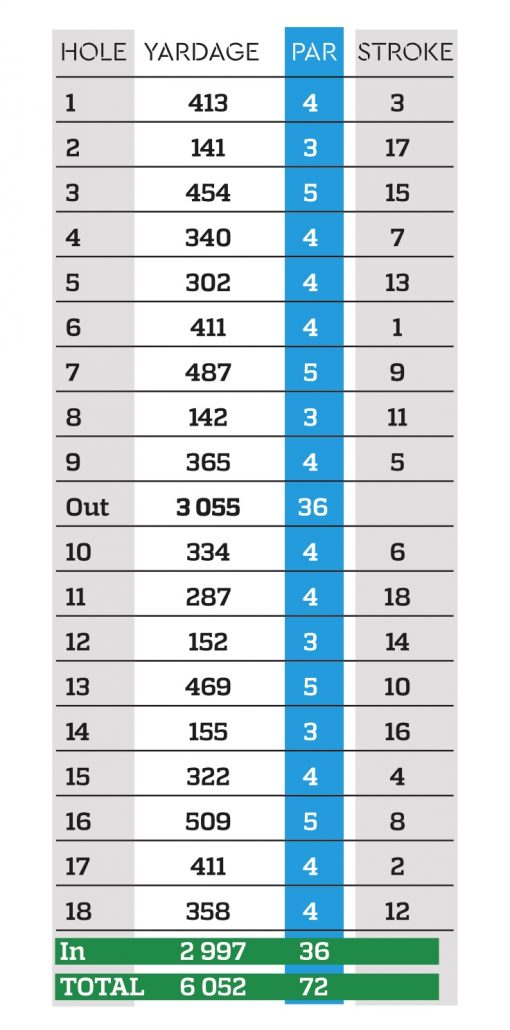You will be hard-pressed to find a more picturesque layout in South Africa than at Erinvale Golf Club in Somerset West, writes MARK SAMPSON.
Driving down Lourensford Road, the course appears on your left, surrounded by mountains, vineyards and the Helderberg Nature Reserve. It is truly a special place where nature abounds, and impeccable conditioning is the order of the day.
As it is perched at the base of the Hottentots-Holland mountain range one can expect the course to have several holes rising up and down with the lie of the land.
The entire course is held in the bosom of the surrounding mountains and down below is the urban sprawl of Strand and the Atlantic Ocean. Late-afternoon rounds on the higher back nine generally come with spectacular tangerine sunsets over the ocean.
The area is rich in history, with British and Dutch settlers arriving in the mid-1600s. To this day the grooves can be seen carved in the rock by thousands of wagons moving in and out of the area.
Erinvale was part of the ever-popular Welgelegen estate. In 1988 the land was identified for a large housing project which was met with resistance from local homeowners. To save it, the owner of Lourensford Wine Estate, David Gant, bought it to conserve the area.
It was over this period that Gary Player’s brother Ian visited the area and suggested that Gary come in and help design a new course. Erinvale was conceived.
The two nines are starkly different, adding to the allure of the course. The front nine is draped over the flatter, more residential part of the estate, running down and back to the clubhouse. The back nine rises sharply behind the clubhouse, towards the slopes of the mountains, allowing golfers to enjoy beautiful sea and mountain views.
A feature of the course is the stunning quartet of par threes, the longest of which plays a mere 155m off the cub tee.
Erinvale is dominated by the south-easter or south-wester winds which prove incredibly deceptive, swirling through the mountains.
The par-three 2nd is only 141m from tee to green, which is enveloped by a massive four-bunker complex to the right and two pot bunkers to the left. It plays slightly downhill to the medium-sized green.
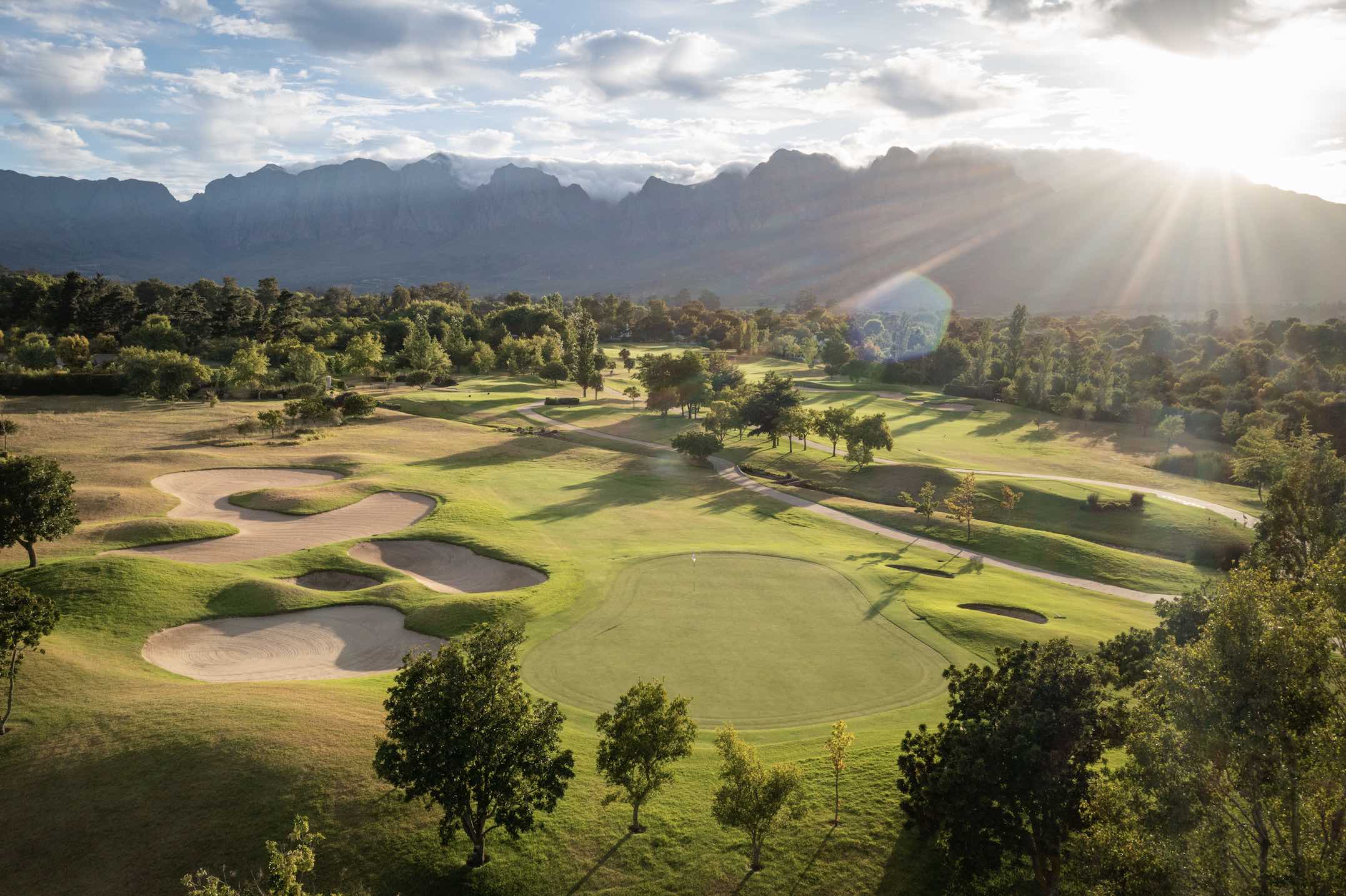
The 8th plays up towards the Helderberg Mountain and is a strong contender for signature hole. The crosswinds through the surrounding pine trees make club selection a bit of a guessing game. The green slopes strongly from back to front and at only 32m deep the surface is hard to find, and it has a large bunker left and a grass bunker right.
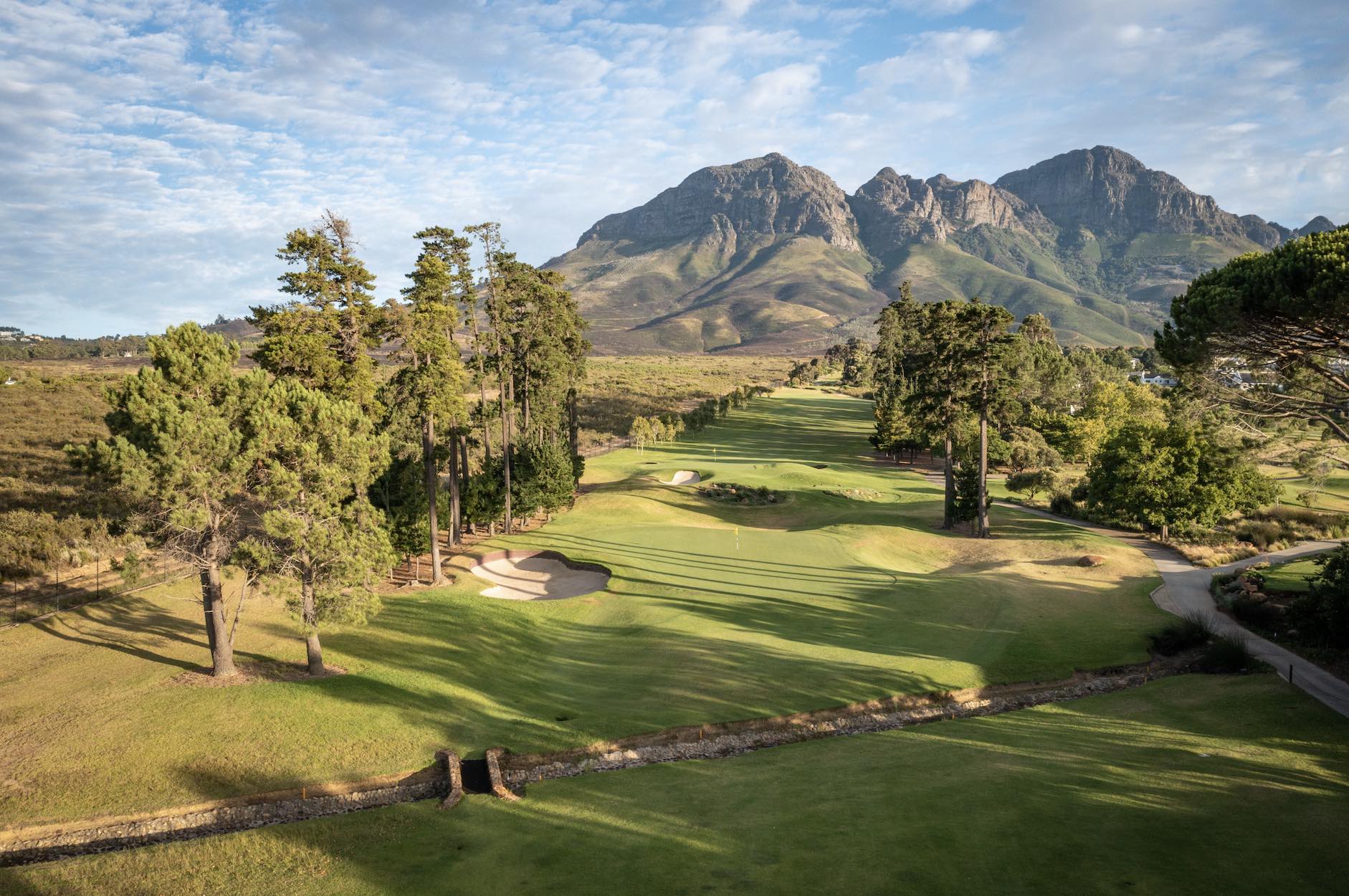
The 12th, which has recently had some new contouring, is an incredibly deceptive hole. Playing steeply uphill, club selection needs special attention if the south-wester is blowing. Sloping from back to front, this 152m hole is easily underestimated.
The final par three on the course is the 155m 14th, playing downhill over a small dam. As it is in the far corner of the course, high up and closest to the mountains, the wind direction is hard to read. At 45m deep the large green is not the most difficult target but beware of the two pot bunkers right and the large bunker left. The water is not really in play, but the size of the green does bring into play a possible three-putt. As always on par threes, the middle of the green is a good target.
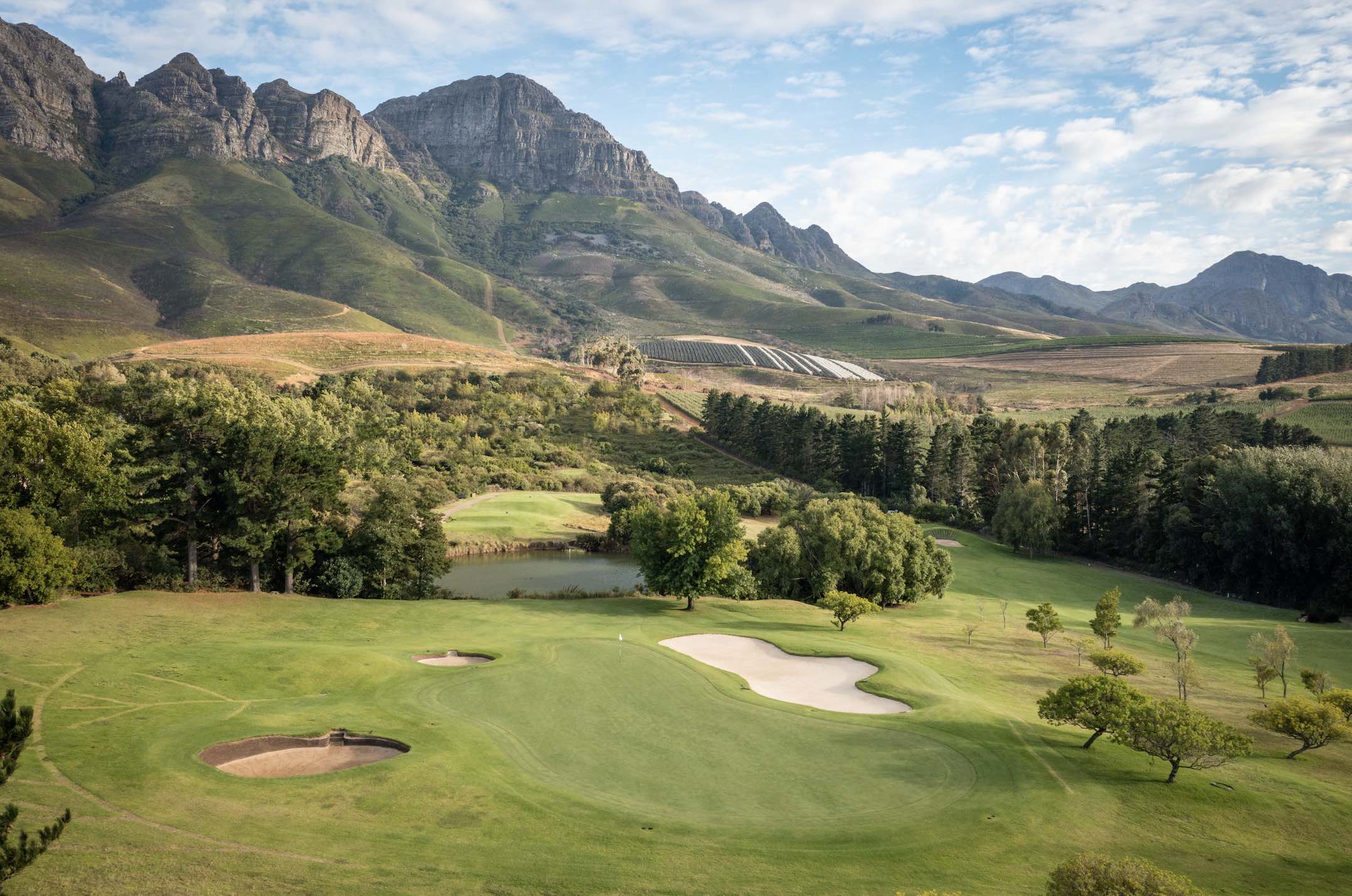
The course has an abundance of memorable holes. The 1st is always a knee-jerker to start the round. At 413m this dogleg-right stroke three immediately tests your long-irons and sets the tone for things to come.
The stroke-one 6th is a monster of a hole measuring 411m in length. Although as straight as an arrow, the length and south-wester can turn it into a hole many amateurs can barely reach in two. Down its entire left side is an out-of-bounds fence with a well-placed fairway bunker right of the landing zone. This will leave a long-iron, or more, to a green that shapes around a water hazard right and a large bunker left. It is a hole that has hurt many a scorecard.
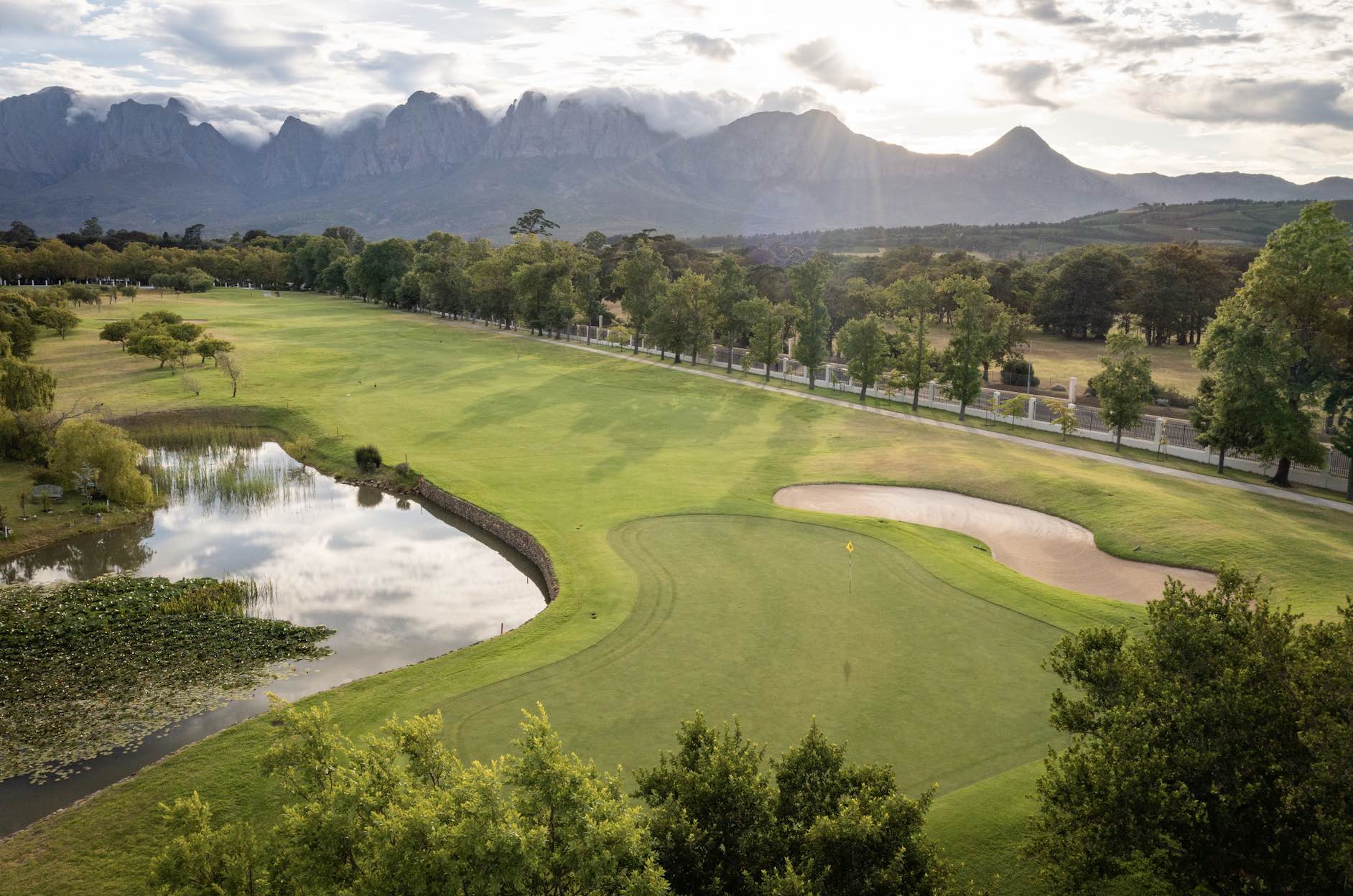
The closing hole on the front nine is another long par four. Playing back up towards the clubhouse it is deceptive at 365m, but again if the wind is up, this stroke five is very tricky. Greenside is where it all happens; it being the longest green at 53m in length. However, it is incredibly narrow. A small water hazard flows along its left flank and then across the front of the green. On the opposite side are three pot bunkers happy to accept any bail-out shots.
Halfway has always been a well-presented offering at Erinvale and never more so than post-Covid. With new interior decorating and a stunning wooden deck sprawling out of the clubhouse, it can make for a welcome breather. It is a small menu but it contains impeccable, well-priced food.
The back nine, routing up and then back down the hillside, is a visual delight with great views of the mountains before you turn back to the ocean. The par-five 13th is the final hole away from the clubhouse and it takes you straight to the base of the mountains. It’s a strong par five at 469m which doglegs from right to left downhill to a raised green. Out of bounds along the right side and numerous large pines grab your attention on the approach. The green’s only protection is in the form of one large bunker front right, but its narrow, raised surface is not easy to find in two.
The par-four 15th is always a favourite for the simple reason it is the high point of the course and in the late afternoon the view goes for miles over the ocean. At 322m it can be construed as easy but with the elevation, strong winds can be expected and the strong dogleg right to left makes the semi-blind tee shot difficult. An approach down to a long, thin green is the final piece of the puzzle to this stroke four.
The 17th wins the hotly contested signature hole at Erinvale. See the details below.
The 18th takes you back to the clubhouse with a slight elevation gain to another 53m-long green. It has large bunkers on all four ‘corners’. At 358m it may not be the longest par four, but it will make sure your putter is dialled in. Regardless of your score, this course will leave you wanting more. The mixture of holes is a testament to Gary Player’s experience of golf around the globe.
Erinvale’s status as a test of golf and as a championship venue is confirmed by its history of tournaments including the World Cup of Golf in 1996 (only a year after its official opening) and the SA Open in 2003 and 2004. In more recent times it hosted the South African Disabled Golf Open and in 2020 the Senior IPT. The entire experience of visiting Erinvale is elevated by the dedication and commitment of staff, from management through to the starter.
The general manager, Janyne Marais, who was appointed late last year, comes with a wealth of knowledge and pedigree few can compete with. Having been in the industry for three decades moving through the ranks of marketing, communication, working at the PGA of South Africa and then into management, she has her finger on the pulse of this club and has numerous goals in mind to further enhance the course.
By the same token, superintendent Greg Leckie has over the past 15 years come to know the moods, seasons and nuances of the grand dame and keeps her in pristine condition. Throw in a hugely impressive clubhouse which is continually upgraded, clean and spacious and you have a facility that is as impressive as it is enjoyable.
Also, don’t forget the driving range which is not visible at first sight, at the back of the parking lot. Just be sure not to miss your tee time as the range plays straight towards the mesmerising mountains.
SIGNATURE HOLE
17th hole, par four, 411m
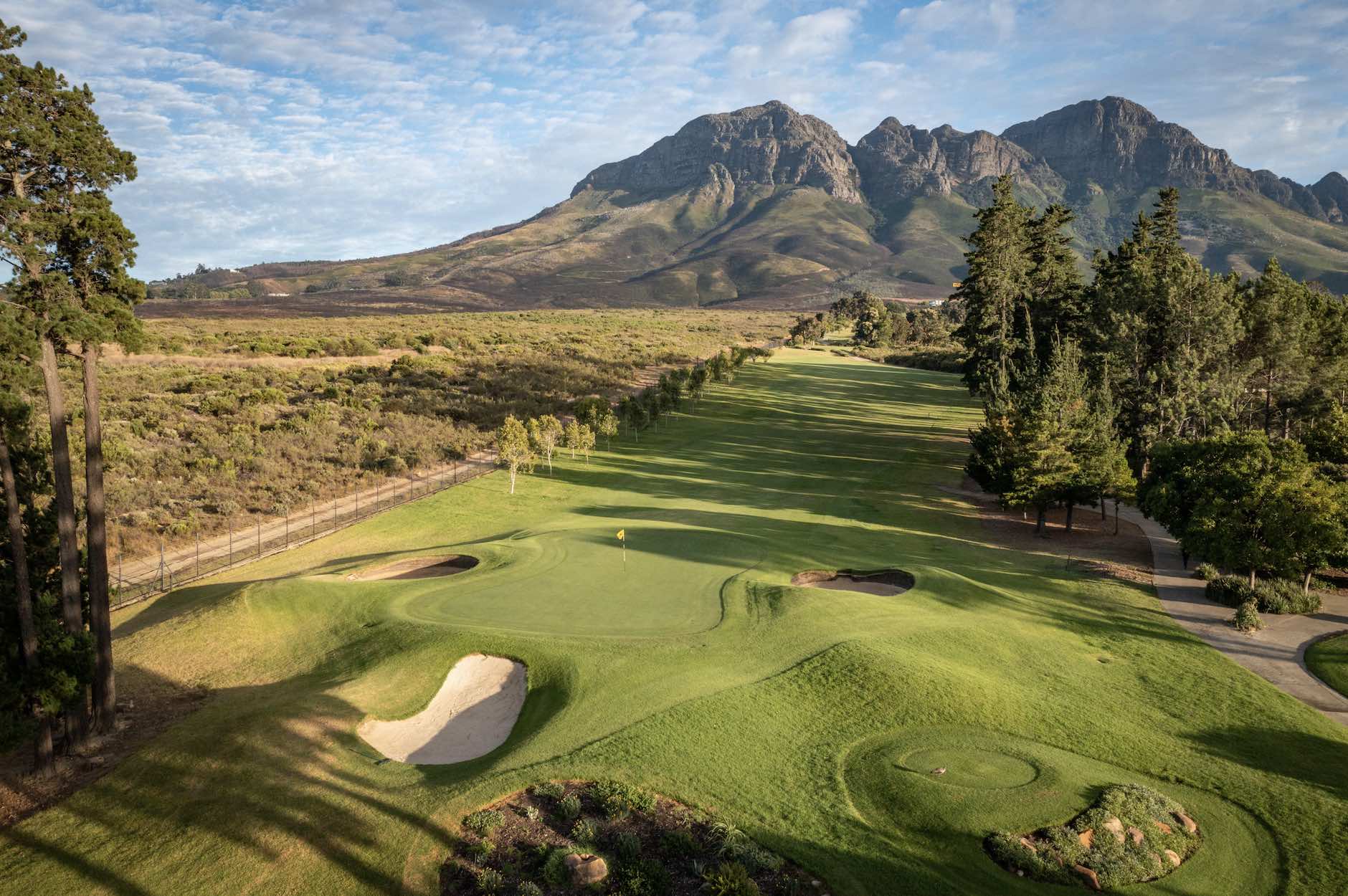
It is a hotly-contested debate as to which hole holds the status of ‘signature’ at Erinvale, but the 17th has several features to make it stand out.
The hole is 411m from the club tees and a massive 440m from the championship tees. At first glance it is a straight-forward downhill par four, but its length dictates the need for a driver off the tee. Suddenly the out of bounds fenceline along the right-hand side becomes a little more noticeable. At the same time a row of pine trees run from just short of the green, moving up towards the tee box and pinching into the fairway on the left and seem to appear bigger and more imposing just before teeing off. The fairway also pinches in at the landing zone.
If even the slightest wind is up, it will most likely be a cross-wind and as the tee is elevated, hang-time is longer and the influence of the wind needs to be considered. The south-wester will push the ball towards the trees while the opposite will bring the out of bounds into play.
One can expect no respite on the approach of this stroke two. The diminutive green is protected by three large bunkers and at a depth of 27m it is the smallest green on the course. Sloping from back to front, its surface narrows in the middle leaving little bailout area. A well-struck drive will leave the average golfer anything from 150m to 180m from the green. The wind direction on this part of the course is particularly difficult to read as the pines on the left stop before the green, allowing the wind to move through strongly. With a long to mid-iron in hand it can be a very intimidating approach. The good news is if that the green is found, a two-putt is the most likely outcome.
GREENFEES
Non-affiliated: R1,050
Affiliated: R630
Carts: R450
GETTING THERE
From Cape Town follow the N2 and take the Stellenbosch/Broadway exit (43). At the offramp, turn left on to the R44. Continue to the first traffic lights, turn right. Follow Main Road, turn left into Lourensford Road, follow for approximately 6km. Erinvale is on the left.
ADDRESS
1 Erinvale Avenue, Somerset West, 7130, South Africa
CONTACT DETAILS
Pro shop: 021 847 1144
[email protected]
Website: www.erinvale.com
– This article first appeared in the March 2023 issue of Compleat Golfer magazine.


